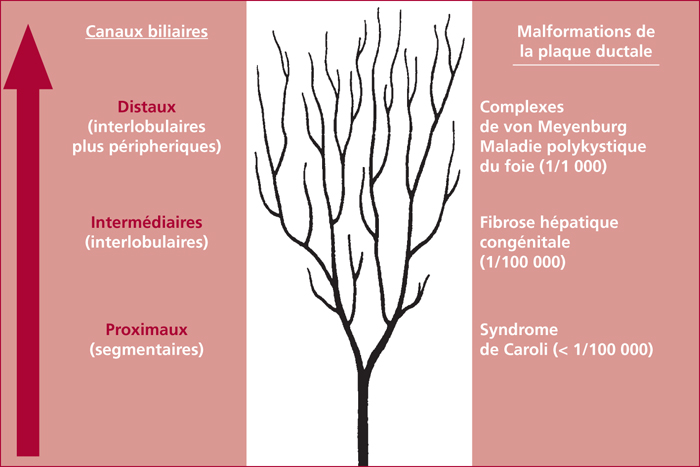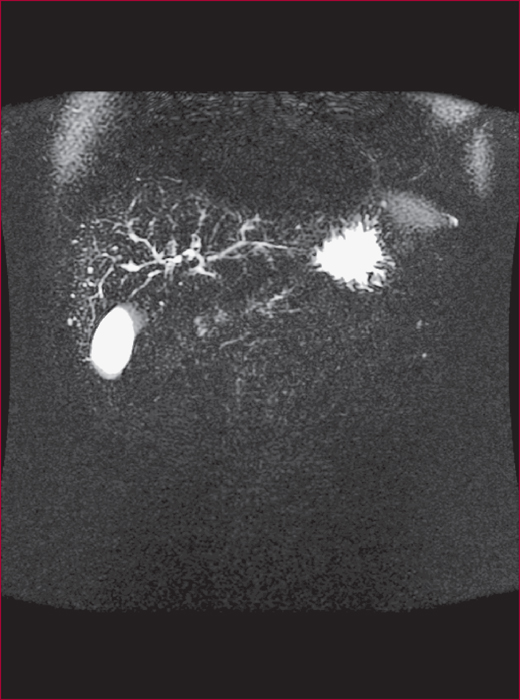Hépato-Gastro & Oncologie Digestive
MENUCongenital cystic disease of intra hepatic biliary ducts Volume 21, issue 1, Janvier 2014
- Key words: ductal plate, Caroli's syndrom, Congenital hepatic fibrosis, Von Meyenburg complexes, polycystic liver disease
- DOI : 10.1684/hpg.2013.0958
- Page(s) : 18-25
- Published in: 2014
During embyogenesis, development and modeling of intrahepatic bile ducts progress continualy from hile to periphery. Intrahepatic lesions include five entities: Caroli's syndrome, congenital hepatic fibrosis, von Meyenburg complexes, polycystic liver disease and simple cyst of the liver. Caroli's syndrome is secondary to ductal plate malformation affecting the largest intrahepatic bile ducts. Cystic dilatations are macroscopic and responsible for cholangitis and may lead to biliary stones and carcinoma which develop within cystic dilatations. Caroli's syndrome may be or not associated with congenital hepatic fibrosis. In case of associated congenital hepatic fibrosis, portal hypertension is present. Congenital hepatic fibrosis and von Meyenburg complexes are secondary to ductal plate malformation affecting the smallest intrahepatic bile ducts. Cystic dilatations are of small size and only detected at histological examination of the liver. In congenital hepatic fibrosis, the main manifestations result from portal hypertension. Simple liver cyst and polycystic liver disease are characterized by cystic dilatations which, by contrast to the preceding entities, do not communicate with the biliary tree. As a result, they have only few clinical consequences. Renal abnormalities are frequently observed in congenital hepatic fibrosis and polycystic liver disease. They correspond to renal malformations associated with biliary malformations. In congenital hepatic fibrosis, renal lesions are characterized by ectatic collecting tubules which are present in two thirds of the cases and transmitted as an autosomal recessive disease. In polycystic liver disease, renal lesions are characterized by polycystic disease which is present in half of the cases and transmitted as an autosomal dominant trait.



